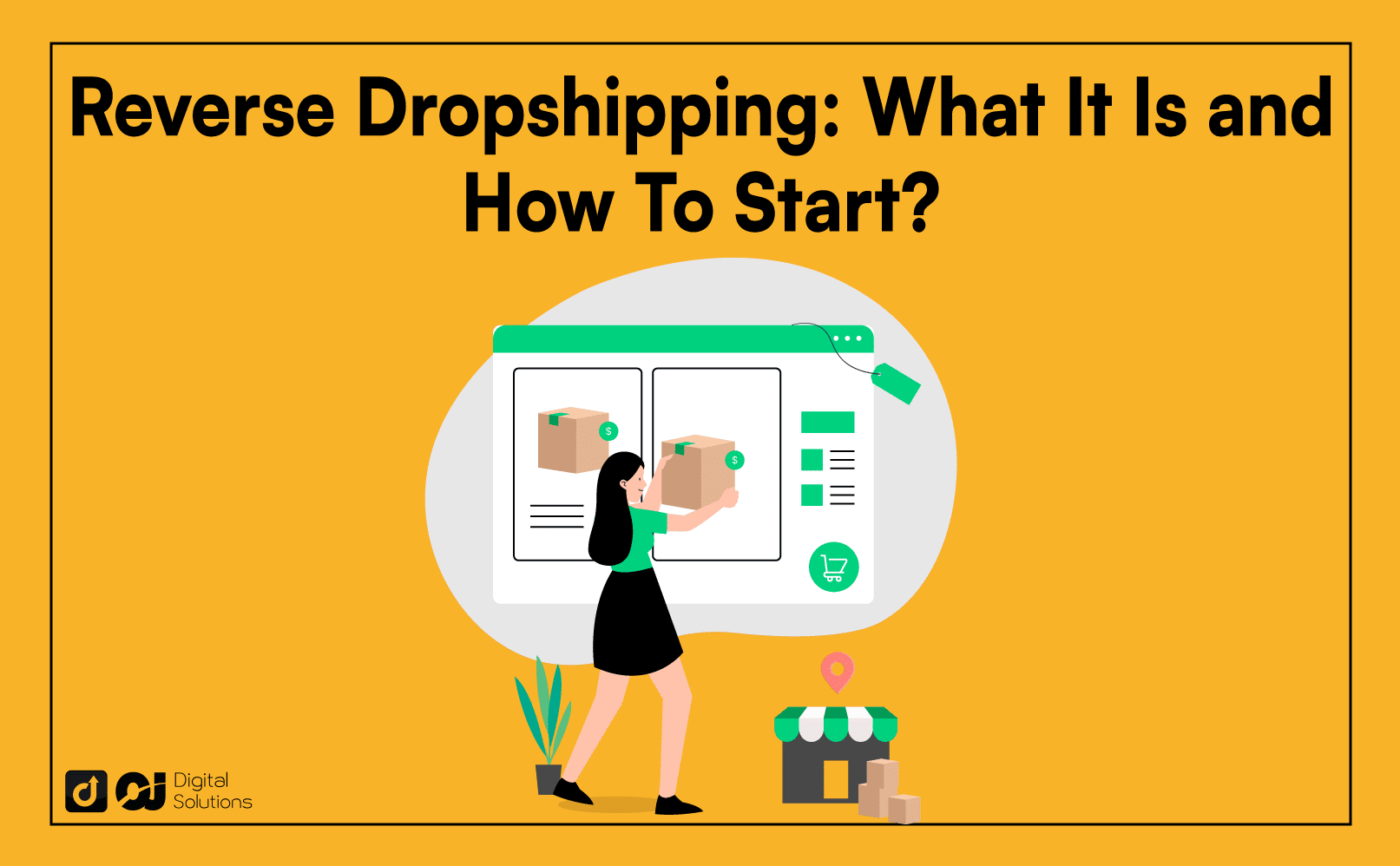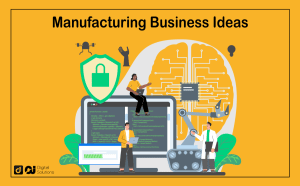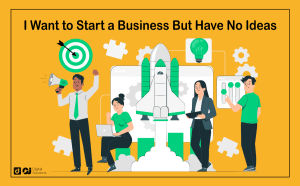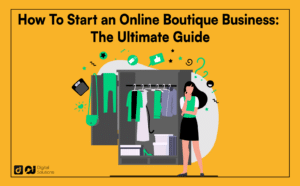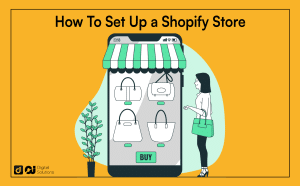You might already be familiar with the dropshipping model, but what if I tell you there is a similar business model with low competition?
Let me introduce reverse dropshipping, which is still unfamiliar to many online sellers. While it has similar aspects to standard dropshipping, it deals with different market and product sources.
I wrote this ultimate guide to discuss reverse dropshipping, its advantages and challenges, and other things you need to know when crafting a reverse dropshipping business plan.
Let’s begin.
What Is Reverse Dropshipping?
In traditional dropshipping, you source mass-produced items from countries like China and other manufacturing exporters, then sell them in the U.S., U.K., and other developed Western countries.
Reverse dropshipping flips the product source and audience: You acquire products from developed countries and market them to developing nations.
This online business model is unique because you focus on quality rather than affordability. You aim to fill a market gap where high-paying customers want easy access to premium products.
To help you understand this concept better, here’s an example.

Let’s say you’re an entrepreneur in the USA who can source luxury and high-end fashion goods from your country. Then, you identify a strong demand for these products in China and other Asian countries or developing nations.
You set up an ecommerce store in your preferred country, targeting wealthy people looking for luxurious and exclusive products.
You find a supplier who agrees to dropship products to your customers, allowing you to run an online store without dealing with inventory, packaging, and shipping.
How Does Reverse Dropshipping Work?
Aside from the product origin, target market, and product offerings, reverse dropshipping still works like the traditional business model.
Let’s take a deeper look at how reverse dropshipping works.

Listing Products
You list products on ecommerce platforms or your website in your target market.
Order Placement
A customer orders from your website and pays for the product.
Product Fulfillment
You forward the order details to your supplier, who will prepare the product for shipment.
Shipping and Delivery
The products sold are shipped directly from your supplier to the customer’s address.
What Is the Difference Between Traditional and Reverse Dropshipping?
| Reverse Dropshipping | Traditional Dropshipping | |
|---|---|---|
| Process Flow | From developed countries to developing countries | From developing nations to more developed countries |
| Target Market | Upper middle class to affluent population | General public |
| Product Category | High-quality, premium goods | Low-cost products with mass appeal |
| Business Costs | Higher costs | Low capital |
| Profit Margin | Higher profit margin per product | Lower profit margin per product |
| Business Risk | Higher risk | Lower risk |
| Market Competition | Low competition | Intense competition |
Process Flow
The regular dropshipping process usually starts with suppliers in countries with lower manufacturing costs, such as China and Indonesia.
They ship their products directly to customers in more developed countries, where affordable products are more in demand.
In contrast, reverse dropshipping begins with sourcing exclusive, high-quality products from regions like the U.S. and Europe.
The suppliers ship the products to countries where there is a lack of options for these goods.
Target Market
With traditional dropshipping, you target customers looking for more affordable products. You focus on offering competitive pricing and a wide range of consumer goods to a broader audience.
In reverse dropshipping, your target market comprises developing or underdeveloped countries, where consumers often prefer high-quality goods. Your focus shifts toward catering to a niche audience willing to pay premium prices for goods not readily accessible locally.
Product Category
Traditional dropshipping covers many categories with mass appeal, often including low-quality products. This may include lower-cost items, gadgets, fashion accessories, electronics, home goods, and more.
On the other hand, reverse dropshipping leans toward higher-quality products and luxury goods. You can offer organic and specialty foods, premium electronics, artisanal goods, and other exclusive goods.
Business Costs
The costs of starting a dropshipping business are lower than starting a reverse dropshipping business model. The product costs are lower, and it is easier to handle the costs of establishing a business in your own country.
With reverse dropshipping, you must hire professionals and locals to increase your chances of success. Setting up a localized ecommerce website will also cost more.
Profit Margin
With a focus on affordability, traditional dropshipping has lower profit margins. The highly competitive market also limits how high you can mark up the prices.
However, lower-priced products are more likely to sell in larger quantities. You will generate revenue through high-volume sales rather than profit per individual sale.
Reverse dropshipping offers more potential for better margins. Premium and exclusive products can fetch a higher retail price, especially when targeting an affluent audience.
You can enjoy higher profits per sale, although you will have a lower sales volume.
Business Risk
Each dropshipping model presents different risks.
For example, traditional dropshippers risk customer dissatisfaction due to low-quality or defective items. It is also challenging to stand out among a sea of competitors offering more or less the same products, severely limiting your profitability potential.
With reverse dropshipping, you rely on your target customer’s behavior and preferences, which can be more volatile than the general audience. Although the profit potential is higher, the financial risk is more prohibitive.
You are also vulnerable to economic and currency uncertainties. Fluctuations or significant events in the country can impact product costs and your profit margins.
Market Competition
As I have mentioned, standard dropshipping has a more competitive landscape. It attracts countless sellers due to its low barrier to entry and potential for passive income.
If you go this route, you might find it difficult to differentiate your products from those of other sellers. You either take a hit on an already low profit or find a way to market yourself more effectively.
Moreover, you are likely sourcing your items from the same dropshipping suppliers. You rely on their ability to provide continuous availability to every dropshipper.
Reverse dropshipping has a less crowded market because it is a relatively new business model. You may face less competition, especially targeting a more niche market.
What Are the Pros and Cons of Reverse Dropshipping?
| ✅PROS | ❌CONS |
|---|---|
| High-Profit Margins | Sourcing Challenges |
| Less Competitive | Unfamiliarity With Target Country’s Laws and Regulations |
| Scalability | Taxes and Tariffs |
| Wide Potential Customer Base | More Barriers to Entry |
| Language and Cultural Barriers |
Pros of Reverse Dropshipping
High Profit Margins
You can set higher profit margins on high-quality and premium goods. If you tap into the right niche, you can access a market willing to pay a premium for your products.
Less Competitive
Reverse dropshipping is not as popular as a traditional dropshipping business. The market is less crowded, giving you more chances to stand out and attract loyal customers.
Scalability
As your business grows, you can optimize your operations and expand your staff to handle more orders.
Wide Potential Customer Base
The growing population of wealthy people in developing countries gives you a wide market to tap into. Because you have flexibility in choosing products, you can also cater to more audiences with different preferences.
Cons of Reverse Dropshipping
Sourcing Challenges
Finding suppliers that can dropship products may be more difficult. This step requires more extensive research and networking.
Navigating a Foreign Country’s Laws and Regulations
You must familiarize yourself with the country’s laws and regulations about importing and selling goods. Some countries have very strict requirements, which can further increase the difficulty of starting this dropshipping business model.
Taxes and Tariffs
Besides shipping costs, you must pay additional taxes, tariffs, and customs fees with international shipping. These extra costs can eat into your profit margin
More Barriers to Entry
The appeal of dropshipping is its low barrier to entry, which is not the case for reverse dropshipping. It can require more resources to establish your business presence and market your products more effectively.
Language and Cultural Differences
Knowing your target market is one of the basics of marketing. It’s more challenging in a foreign country where your audience speaks a different language and has a different culture. You must research their cultural nuances and craft a strategy that resonates with them.
How To Start Reverse Dropshipping: Step-by-Step Guide
Are you interested in starting a reverse dropshipping business? Here’s a quick look at what you should do.
Determine your target market and legal requirements.
Hire or partner up with a local.
Find a product to sell.
Find the right supplier.
Set up your reverse dropshipping store.
Create and optimize your product listings.
Translate and localize your product pages.
Promote your online store.
Get feedback and adjust.
Scale your business.
1. Determine Your Target Market and Legal Requirements.
Pick a Market.
Consider which developing countries you want to target for your reverse dropshipping business.
Pick a market with a growing middle- and upper-class population and increasing demand for high-quality and luxurious products.
One of the most popular picks for this business model is the Chinese market, which has a sizeable population looking for premium goods from Western countries.
Here’s a quick look at the top cities in other Asian countries with the most millionaires.

Data Source: Yahoo! News
Conduct Market Research.
Find out the preferences and shopping behavior of your target market.
What brands and product types are they looking for? How much are they willing to pay?
Consider the following factors to understand your audience:
Age
Income
Cultural preferences
Lifestyle trends
When you have a good idea of your target market, you can tailor your product offerings and marketing efforts more effectively.
Consider Local Laws and Regulations.
Once you pick a country, study the following aspects of establishing a business in their territory:
Business Licenses
Product Regulations
Import and Customs Laws
Consumer Protection Laws
Taxes and Fees
2. Hire or Partner With a Local.
Don’t skip this step. Running an online business without navigating a foreign market’s dynamics is difficult.
Getting a local on board your business will significantly increase your chances of success. After all, locals understand their culture, trends, and consumer behavior better than you.
Hiring a local will also help you overcome one of the biggest barriers of this business model: communication.
You can go about this in two ways.
Get a Local Consultant.
Hire or consult with a local who understands the local market.
Their job is to give you better insight into your audience and provide data-driven suggestions for your marketing strategy.
They may also help you navigate their laws and regulations, provided they have legal expertise.
Hire a Local Talent.
You can also hire someone or a team of locals to help you with the following tasks:
Localizing your reverse dropshipping website and marketing materials
Crafting accurate and culturally appropriate web pages, product descriptions, advertising copies, and more
Reaching out to local media and influencers
3. Find a Winning Product To Sell.
Look for a product with high demand and (ideally) low competition.
You can use these product research tools to help you find winning ideas.
| Product Research Platform | Pricing | Features | Try Now |
|---|---|---|---|
| Amazon Bestsellers | Free | Most popular products across the platform | Try It Out |
| AliExpress Dropshipping Center | Free | Find Products To Sell section Product Analysis | Try It Out |
| Jungle Scout Opportunity Finder | Starts at $49/month | Niche score Historical keyword data | Try It Out |
| Helium 10 Black Box | Starts at $29/month | Various custom search filters 450+ million Amazon product database | Try It Out |
| AutoDS Winning Products Hub | Starts at $12.90/month | Handpicked best-sellers for dropshipping Detailed product analysis | Try It Out |
| Sellthetrend.com | Starts at $39.97/month | Data and insights into trending and popular products Trend explorer | Try It Out |
| Thieve.co | Starts at $15/month | Curated on-trend and winning dropshipping products from AliExpress User-generated product lists | Try It Out |
| Niche Scraper | Starts at $49.95/month | Wide product database across different niches Shopify store analytics | Try It Out |
| Google Trends | Free | Keyword search volume insights Regional data | Try It Out |
| Google Ads Keyword Planner | Free | Keyword suggestions Competitor data | Try It Out |
| Bestsellers in Local Marketplaces | Depends on the platform | Bestselling products in the local market Trending items insights | N/A |
Remember your target audience and business model when looking for products. You can use these tools to give you ideas but ensure your chosen product has a premium and high-quality feel.
4. Find Reliable Suppliers for Your Products.
When you’ve chosen a product, find a trustworthy supplier who can dropship to the country you want to target.
Some popular options for reverse dropshippers are suppliers from the US, Canada, and Europe, known for producing high-quality goods.
To give you an idea, here are some trusted suppliers.
| Supplier | Niche | Pricing | Country |
|---|---|---|---|
| AliExpress | Various products across several categories | Free | China |
| Sellvia | Unique products and product designs | $890 to $5,990 one-time payment | US |
| Spocket | High-ranking products | $0 to $99.99 per month | US/EU |
| SaleHoo | Various products | $67 annually or $127 for lifetime access | New Zealand |
| US Direct | Various products from top suppliers | Free | US |
| Dripshipper | Coffee products | $30 to $197 per month | US |
| Gelato | Print-on-demand products | $0 to $99 per month | Worldwide |
| Modalyst | Fashion and accessories | $0 to $99 per month | US/EU |
| 01Supply | Sustainable and handmade products with local production | $0 to $49 per month | Worldwide |
| Brandsgateway | Fashion and luxury brands | €279 per month for Shopify | EU |
| Bigbuy.eu | Various products | EU |
5. Set Up Your Reverse Dropshipping Store.
Choose Your Hosting Plan.
Your website’s performance highly affects your brand identity and the user’s experience, directly affecting your sales.

You want to choose a provider that can guarantee consistent performance with low downtime rates. I recommend starting with BlueHost or HostGator, two companies with plans that provide the best value for money.

Select a Selling Platform.
If you have more resources, you can build your own ecommerce website from the ground up. However, your best bet is to choose an ecommerce solution that can meet your business and website needs.
Here are several options for both beginners and advanced users.
WooCommerce
BigCommerce
Wix
Magento

However, I highly recommend Shopify.
Starting a dropshipping business on Shopify is easy, even for beginners.
Its user-friendly interface allows you to build a complete ecommerce website without coding knowledge. It has customizable templates, integrated tools, and a wide variety of third-party plugins to ensure a good customer experience.
Name Your Store.
Your store’s name will set the tone of your brand identity. It must have the following characteristics:
Distinct
Easy to remember
Relevant to your brand image
Relevant to your products
Easily understood by locals
Consider cultural and linguistic factors when naming your store to ensure it resonates with your target audience.
Design Your Dropshipping Website.

Your business website is important for creating a positive user experience and building relationships with visitors and customers. If well-designed, it can instill user trust and increase conversion rates.
Here are some tips to optimize your web design:
Theme
Choose a theme that reflects your brand and products. You can customize templates on your chosen ecommerce platform to fit your image.Logo
Prominently display your logo to improve brand recognition. It should be professionally designed to instill trust and credibility.Homepage
It should be visually appealing, fast to load, and easy to navigate. This page must highlight your products, enticing visitors to browse the rest of your website.Navigation
Design an easy-to-use menu that even first-time visitors can intuitively use. This way, potential customers can easily shop online and have a good overall experience.Mobile
Ensure your website design is responsive adapting to smaller screens.Branding
Keep your visual identity consistent across your website using colors, typography, and graphics. This creates a cohesive experience and strengthens your brand.
6. Create and Optimize Your Product Listings.
Create product listings on your website.
If you’re using Shopify, you can add products to Shopify by clicking the Product tab on your admin page.
Write a Compelling Product Description.

Your conversion rate depends highly on your product description. It will determine whether the customer decides to buy your product or not.
Here are some tips for writing product descriptions that convert:
Use clear and concise language.
Highlight the unique features and the benefits.
Mention how your product solves a customer’s pain point.
Keep the product description in line with your brand’s tone.
If you’re a beginner, you can use product description templates to help you get ideas for a good description.
You can also browse examples of well-performing Shopify product pages to find inspiration.
Add High-Quality Images.

Because you’re operating online, your customers can only rely on the photos you provide to make a buying decision.
Ensure you optimize your product images to help them make their decision faster (and in your favor) with these tips:
Take high-quality photos with a good camera.
Ask for high-quality photos from your supplier.
Upload multiple images for different variations and angles.
Zoom in on unique features.
Add images of the product in use (i.e., a model carrying a bag) to help customers visualize it.
Optimize Your Product Listing.

Optimizing your listings improves your visibility in the search results and increases your chances of converting visitors into customers.
Here are some tips you can follow.
Use Relevant Keywords.
To appear on the search results page, you must use relevant keywords. These keywords are search phrases your audience will likely use when searching for products like yours.
You can use tools like Google Keyword Planner, Ahrefs, and other keyword research tools to help you find competitive keywords.
Design an Effective Product Landing Page.
Your landing pages must highlight your product’s benefits, features, and unique selling points. You can find product landing page examples online that can produce high conversion rates.
Write Persuasive Titles.
Create clear and intriguing product titles reflecting their main features, benefits, and unique selling points. Keep the title short while emphasizing the value of your products and incorporating the keywords naturally.
Provide Pricing and Shipping Information.
Display the product’s price, discounts or incentives, and shipping costs. Customers enjoy knowing the total cost upfront; transparency helps build consumer trust.
Create a Clean Layout.
A clean and organized layout helps customers easily navigate the page. It also allows them to find the information they need.
Use bullet points to outline key product features and specifications. Create different sections, like product details, sizing, materials, and such, to avoid overwhelming the readers.
Use Clear Call-to-Action Buttons.
Place Add to Cart or Buy Now buttons prominently on your product pages. Doing this helps customers check their desired products more easily.
7. Translate and Localize Your Store and Product Pages.
You must use their local language on your website, product pages, and marketing campaigns to connect with your target audience.
Remember: English may not always be widely used in your target country.
However, this step requires more than just translating. You must also localize the content, incorporating idioms, colloquialisms, and cultural references into the translation.
Translation is another reason to hire a local. They can better capture the content’s essence while making it relevant and compelling for your audience.
8. Promote Your Online Store.
Once you set up your store, it’s time to attract potential customers.
How do you create an effective marketing strategy?
I will discuss the two most important aspects below.
Define Your Target Audience.
Before you start marketing campaigns, you must have a good idea of your potential customers. You must make a detailed buyer persona considering the following factors:

Demographics (age, gender, location, income, education, and occupation)
Interests and hobbies
Lifestyle
Goals
Buying behavior
Buying motivations
Pain points
Choose the Right Promotion Methods.
While free promotion methods like blogging and organic social media sharing have their place, they might not provide immediate results for a reverse dropshipping business.
Since you are targeting international markets, it is better to use methods that can drive faster and more targeted results.
You can still do social media and blog marketing later, which are effective strategies for connecting with your audience.
However, I recommend focusing on these methods.
Social Media Ads
Social media platforms are great starting points, but you must see which ones your audience likely uses. You must also consider local platforms besides those you’re more familiar with.
For example, many countries ban Facebook, Twitter, and other popular sites. Weibo and WeChat are more popular in China.
Paid Ads
Aside from social media, you can also use other forms of paid advertising.
Google Ads, for example, offers a pay-per-click (PPC) model where your ads can show on the search results, YouTube, Blogger, and other well-known websites included in the Google Display Network (GDN).
However, you must still consider the websites your market uses. In China, Baidu is the most popular search engine.

Local Influencers and Micro-Influencers
Collaborating with influencers can help you reach your target market more effectively. They can help create an authentic experience that speaks to their followers’ preferences.
Local Marketplaces
Use ecommerce platforms that are widely used in the country. Doing this can help you gain credibility, as your customers trust the website they use frequently.
9. Get Feedback and Adapt.
Running a business is a continuous effort. To ensure long-term success, you must consistently analyze your store’s performance and make adjustments.

You can use your ecommerce platform’s built-in analytics or add Google Analytics to Shopify.
Here are some metrics you need to monitor.
| Areas for Optimization | Metrics To Monitor | Tools You Can Use |
|---|---|---|
| Website Performance | Traffic sources Page views Average time on page | Built-in analytics dashboard Google Analytics |
| Customer Feedback | Reviews Ratings Survey answers | Hotjar Qualaroo Usersnap |
| Consumer Behavior | Conversion rate Average order value Bounce rate | Google Analytics Google Webmasters Zoho CRM |
| Ad Performance | Click-through rate Conversion rate Cost per click Ad impressions | Google Analytics Facebook for Business AdRoll |
| Marketing Strategy | Return on investment Customer acquisition cost Engagement metrics | Email marketing analytics Social media insights Optimizely |
| Finances | Gross and net revenue Profit margin Operating expenses Return rate | Quickbooks Xero |
Analyze Sales and Results.
Examine your sales data regularly to identify trends and patterns: which channels drive the most sales, which products perform well, and which categories are popular.
Using this information, you can effectively distribute your marketing costs and make adjustments where needed.
Collect Customer Feedback.
Determine your customers’ satisfaction level with your brand. Check social media, reviews, and customer service interactions to understand better what they like and don’t like about their experience.
Don’t ignore negative reviews, as these can help you identify your weaknesses and find areas for improvement.
Observe Your Customers’ Behavior.
How do they shop and interact with your brand?
Check your web analytics to see what device they use when browsing, which pages they check, how they interact with your ads, and how often they visit your website.
This data can help you fine-tune your marketing strategy and enhance your website’s user experience.
Consider Profitability.
Evaluate the profitability of your products and see which ones are popular, most profitable, or underperforming.
You must consistently review your sales and profits monthly to see if you are reaching your goals.
Otherwise, consider adjusting your prices, running promotions, or introducing complementary products to maximize profits.
10. Scale Your Business.
When you hit a good flow, you can start considering scaling your business by adding products and expanding your reach.
This step isn’t easy, so you should do the following to prepare your business for growth.
Hire a Customer Service Representative.
As your business expands, you may need to hire dedicated staff to answer customer inquiries and handle issues.
This can help you provide an excellent customer experience, ensuring your business can respond promptly. In turn, this can improve brand loyalty and customer satisfaction.
Ensure Product Availability.
I recommend looking for several dropshipping suppliers for the same item to diversify your supply chain. This reduces risks of disruptions due to running out of stock, delivery delays, and other issues.
Optimize Your Order Processes.
Processing orders may become overwhelming when you expand your business.
Ensure you establish a good, uninterrupted flow by using automation tools. You can integrate your store with dropshipping apps like Spocket and Zendrop using Shopify.
Frequently Asked Questions (FAQs)
Is Reverse Dropshipping Legal?
Yes, as long as you comply with your target country’s laws and regulations.
Is It Legal To Reverse Dropship From Amazon?
Yes, as long as you comply with Amazon’s policies. Review their terms and guidelines before you start a reverse dropshipping business.
What Is a Reverse Dropshipping Example?
An example of this business model is sourcing premium skincare products from the USA and selling them to China.
How Do I Find a Local Dropshipping Supplier?
Here are some tips for finding a local dropshipping supplier:
Use online directories.
Identify premium products in demand and check who supplies them.
Network at local events.
The Bottom Line
Reverse dropshipping can be lucrative with the right products and audience.
You can establish a successful international business by overcoming cultural differences and language barriers.
Remember my tips to ensure success if you want to take advantage of the low competition.
Alternatively, you can learn how to start traditional dropshipping to see which would work best for you.

